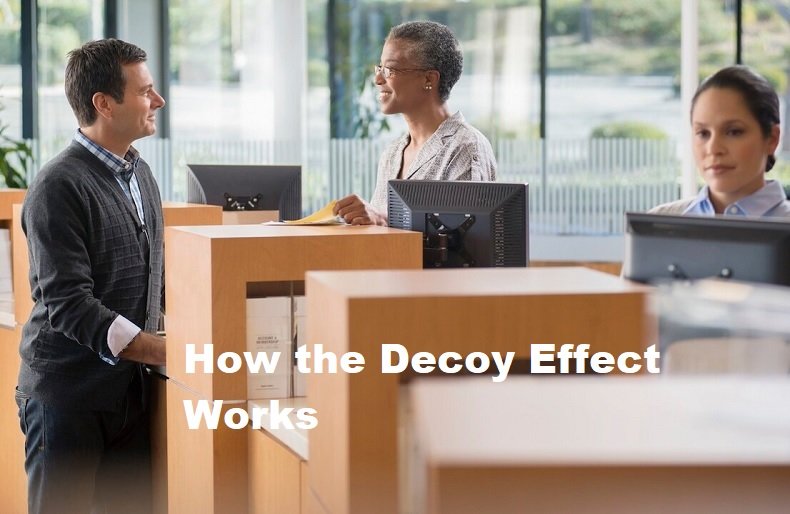In the business world, marketing is a very important aspect to increase sales and profits. One marketing strategy that is often used is the decoy effect. The decoy effect is a marketing strategy that exploits the influence of unrealistic options to influence consumer choices.
Understanding the Decoy Effect
Decoy effect is a phenomenon where consumers will tend to have a certain change in preference between two options when also presented with a third option that is dominated asymmetrically. This third option is known as decoy.
The decoy effect works by making consumers compare the first and second options with the third option. This third option is usually made at a cheaper or more expensive price than the first and second options, but has less attractive features. As a result, consumers will tend to choose the first or second option, because the third option seems less profitable.
Background
The Decoy effect was first studied by Amos Tversky and Daniel Kahneman in 1979. In their research, Tversky and Kahneman gave respondents two options to choose from, namely option A and option B. Option A was a car priced at $15,000, while option B is a car priced at $12,000.
The results showed that more respondents chose option A than option B. However, when Tversky and Kahneman added a third option to the choice, namely a car priced at $10,000, the results changed.
When the third option was added, more respondents chose option B. This is because option B seemed more profitable than option A, after comparing it with the third option.
How the Decoy Effect Works
The decoy effect works by making consumers compare the first and second options with the third option. This third option is usually made at a cheaper or more expensive price than the first and second options, but has less attractive features. As a result, consumers will tend to choose the first or second option, because the third option seems less profitable.
The following are several examples of applying the decoy effect in marketing:
– Choice of drink sizes in cafes: Cafes usually offer three choices of drink sizes, namely small, medium and large. Medium sizes are usually more expensive than small sizes, but cheaper than large sizes. However, the medium size is actually no more profitable than the small size, because consumers only get a little extra drink for a higher price.
– Choice of internet packages at cellular operators: Cellular operators usually offer three choices of internet packages, namely budget packages, regular packages and premium packages. Economical packages usually have the cheapest prices, but the internet quota is also the smallest. The premium package has the most expensive price, but the internet quota is also the largest. Regular packages are usually in the middle between budget and premium packages. However, regular packages are actually no more profitable than budget or premium packages, because consumers only get a small additional internet quota at a higher price.
Tips to Avoid the Decoy Effect
The decoy effect is an effective marketing strategy to increase sales. However, it is important for consumers to be aware of this effect, so that they are not easily influenced and choose options that do not suit their needs.
Here are some tips to avoid the decoy effect:
– Don’t compare the option with the third option. Focus on comparing the first and second options, and choose the option that best suits your needs.
– Recognize the company’s purpose in offering a third option. The third option is usually offered to make consumers choose another option that is more profitable for the company.
– Do price research before buying. Compare prices of products or services from various vendors before deciding to purchase.
So, the Decoy effect is an effective marketing strategy to increase sales. However, it is important for consumers to be aware of this effect, so that they are not easily influenced and choose options that do not suit their needs.
Why does the Decoy Effect Occur?
There are several theories that try to explain why the decoy effect occurs. One theory is that decoys make targets appear more prominent and easy compared to competitors. This condition is because the target dominates the decoy in all aspects, while the competitor only dominates the decoy in several aspects. Therefore, the target appears more valuable and attractive than competitors.
Another theory is that decoy influences our perception of the value of different attributes. For example, if we consider price and storage as two relevant attributes, decoy may make us feel that storage is more important than price, or vice versa. This depends on how decoy is dominated by the target and competitors. If the decoy is more expensive than the target but has the same or less storage, then we will feel that price is more important than storage, and choose the target. If a decoy is cheaper than a competitor but has the same or more storage, then we will feel that storage is more important than price, and choose the competitor.
Conclusion
The decoy effect is an effective marketing strategy to influence consumer decisions by adding a third, less attractive option as bait to strengthen the appeal of the main option. The decoy effect works because of cognitive bias or thinking errors that humans have, especially the asymmetric dominance effect. To apply the decoy effect in marketing, you need to determine the main option, second option, third option, and display all three options simultaneously and clearly.
By using the decoy effect, you can increase sales and profits from the product or service you want. However, you must also be careful not to deceive or defraud consumers in unethical or illegal ways. You must continue to provide value and quality according to the price you offer, and maintain customer satisfaction and loyalty.









